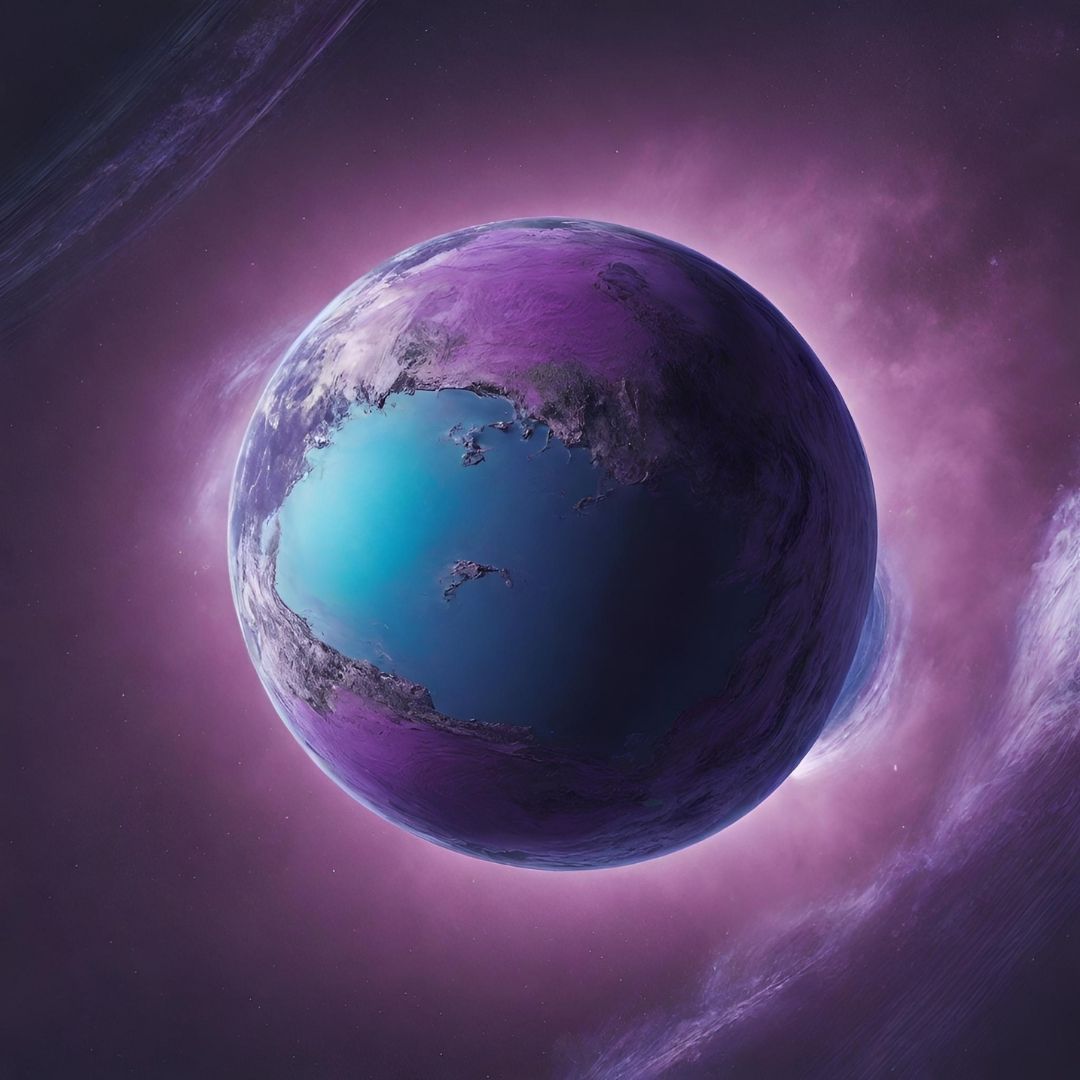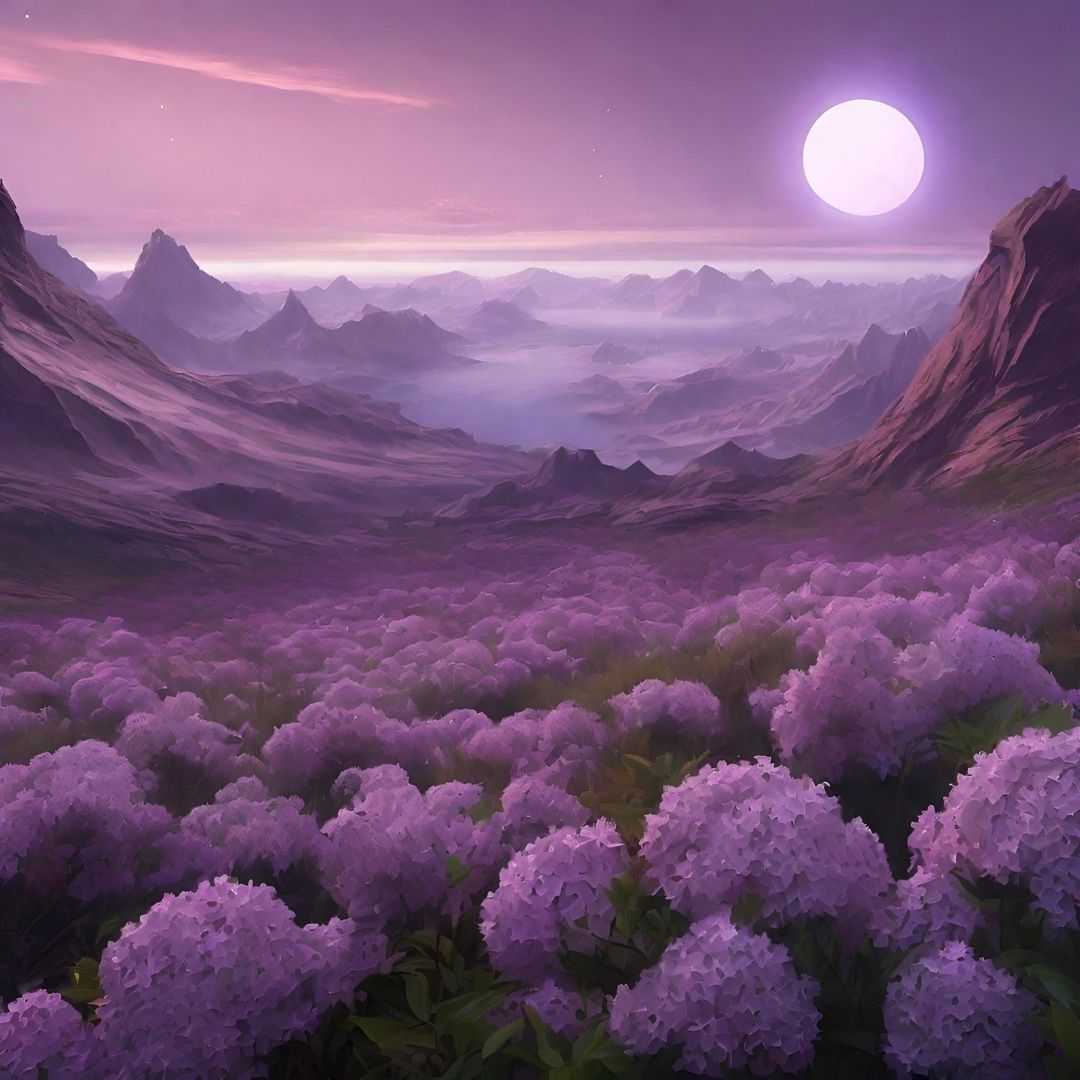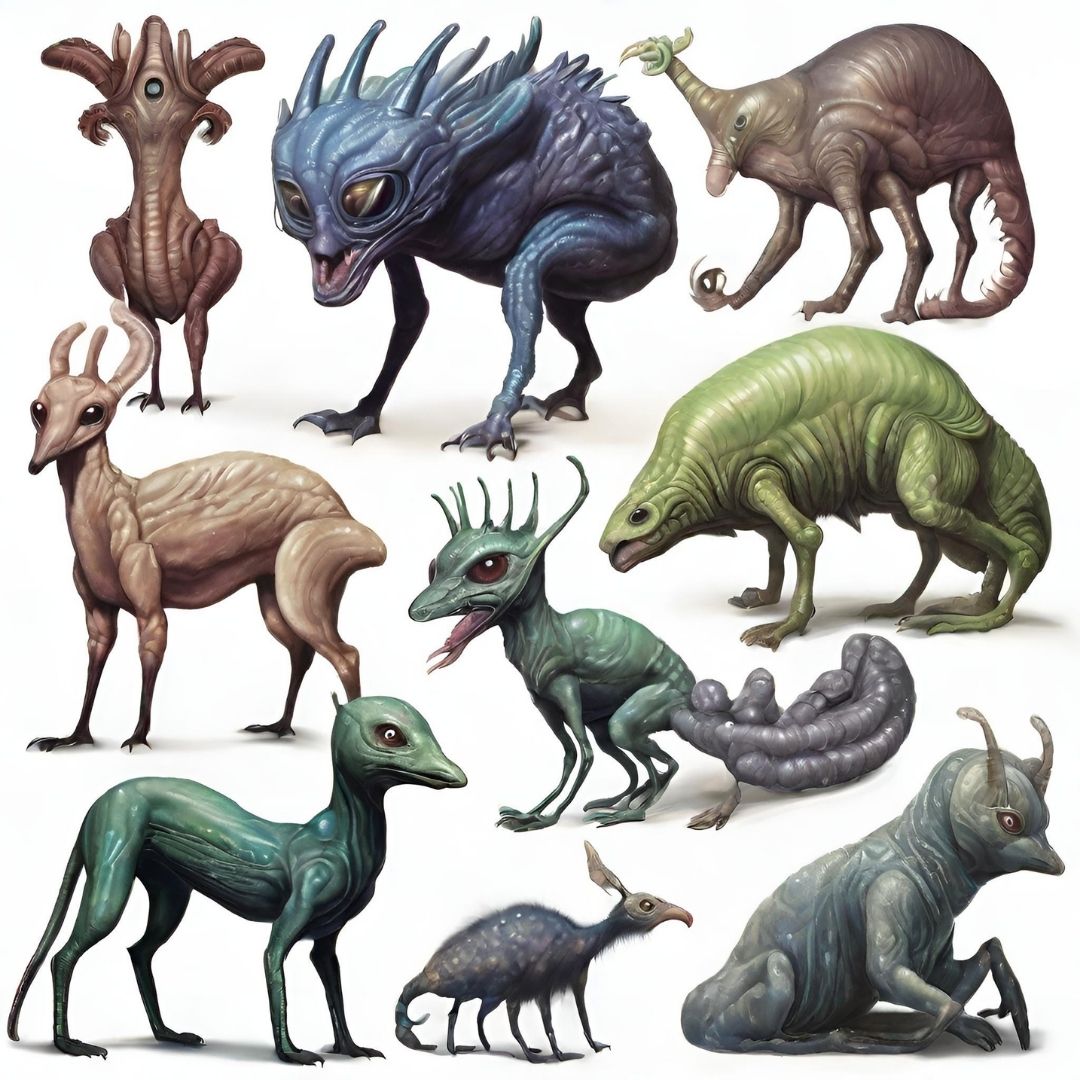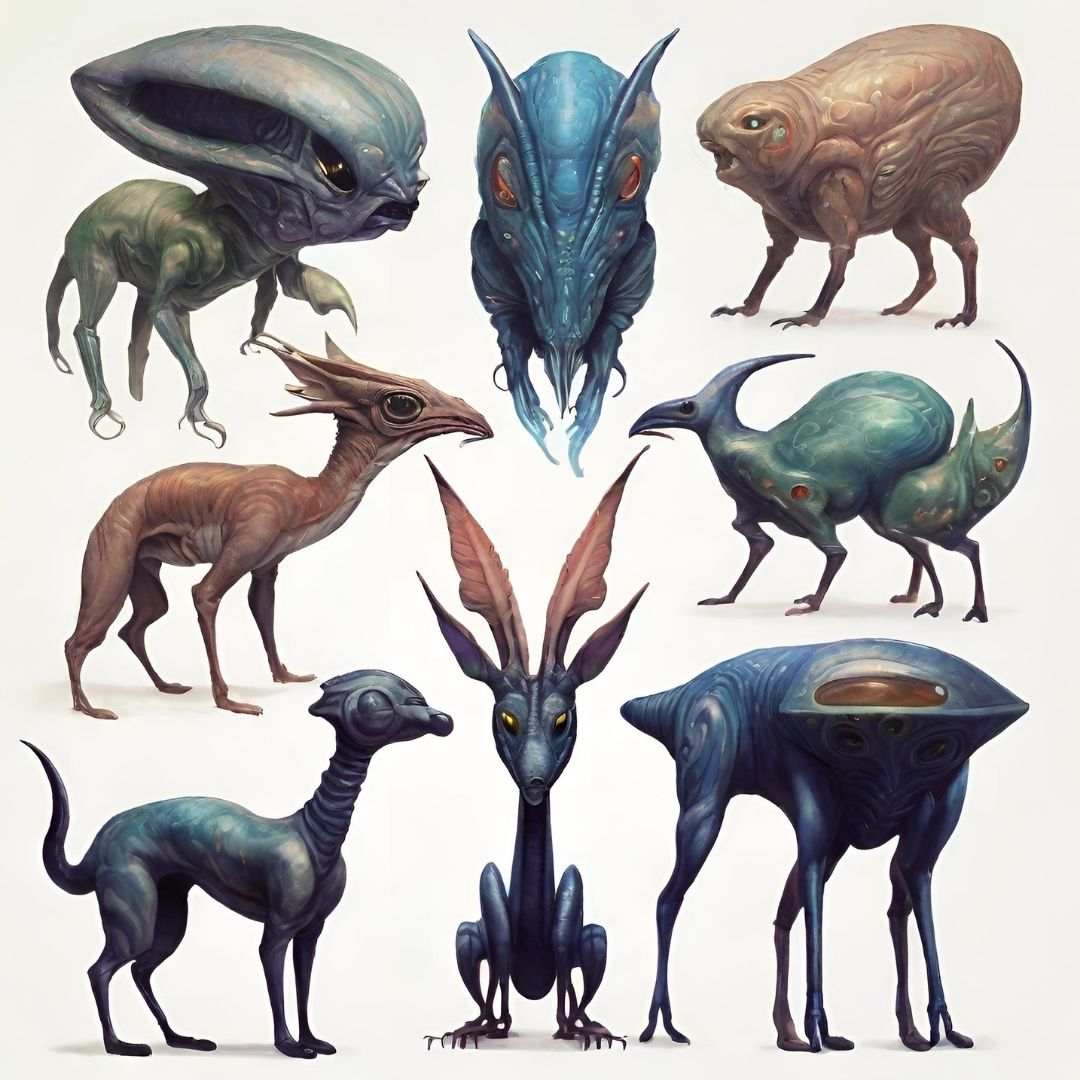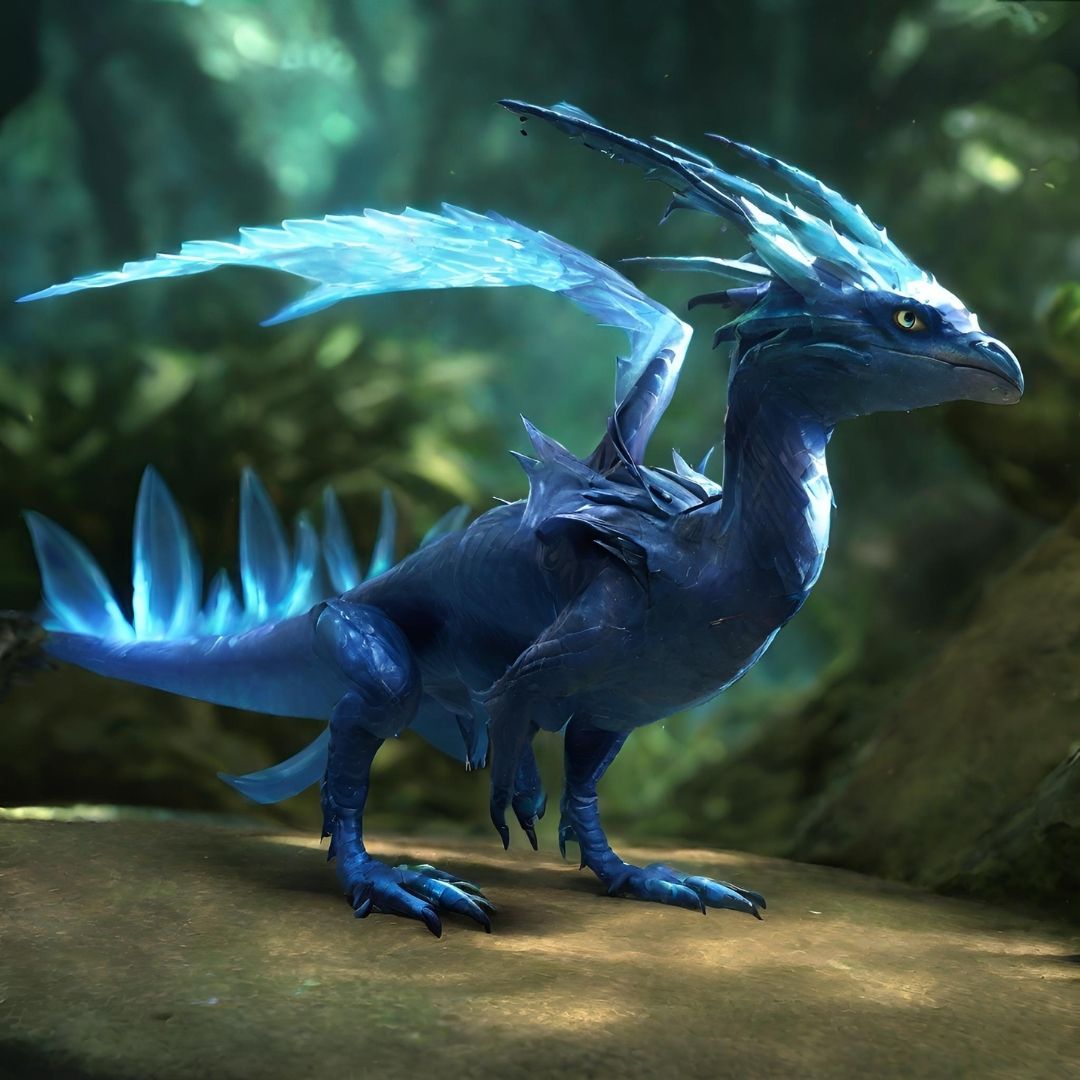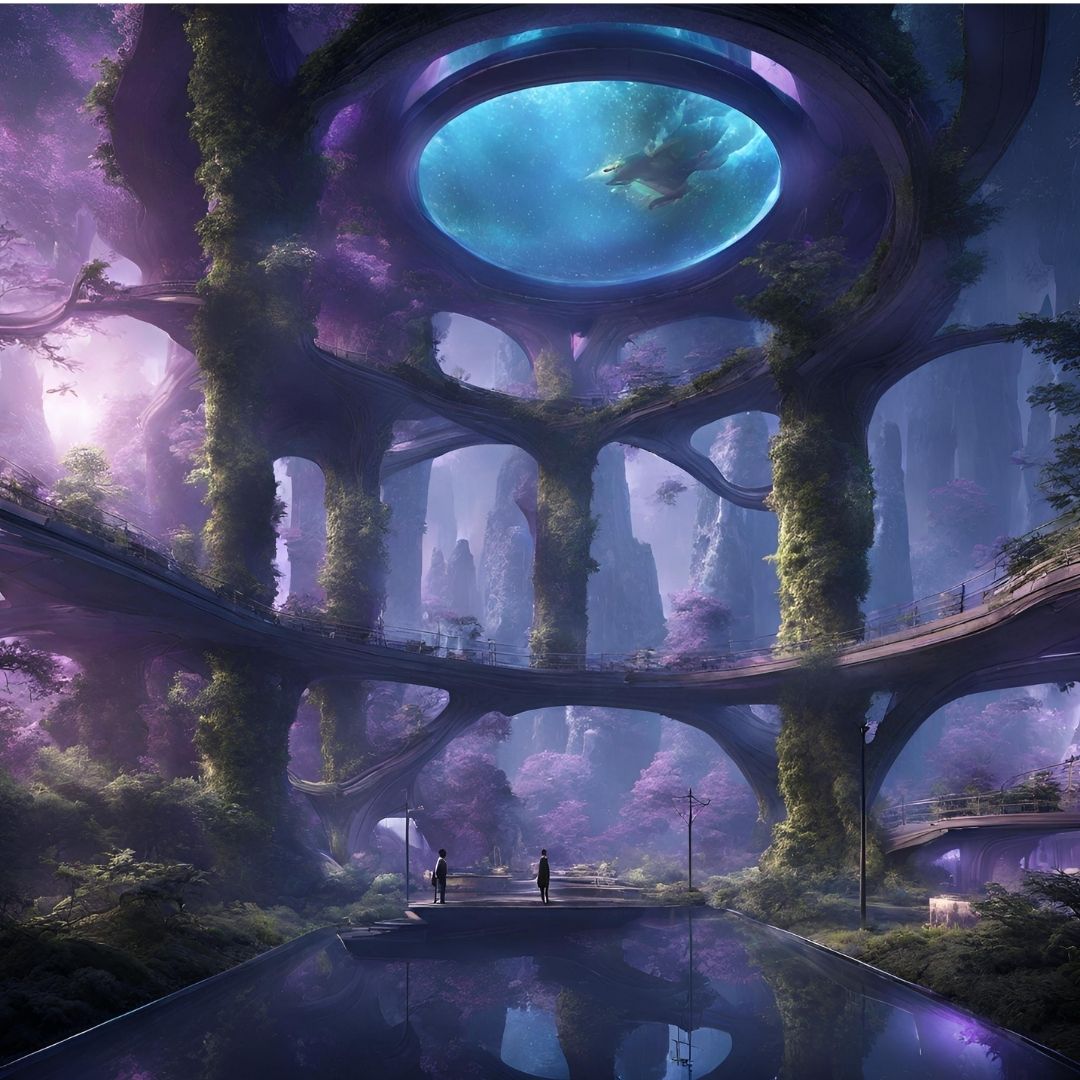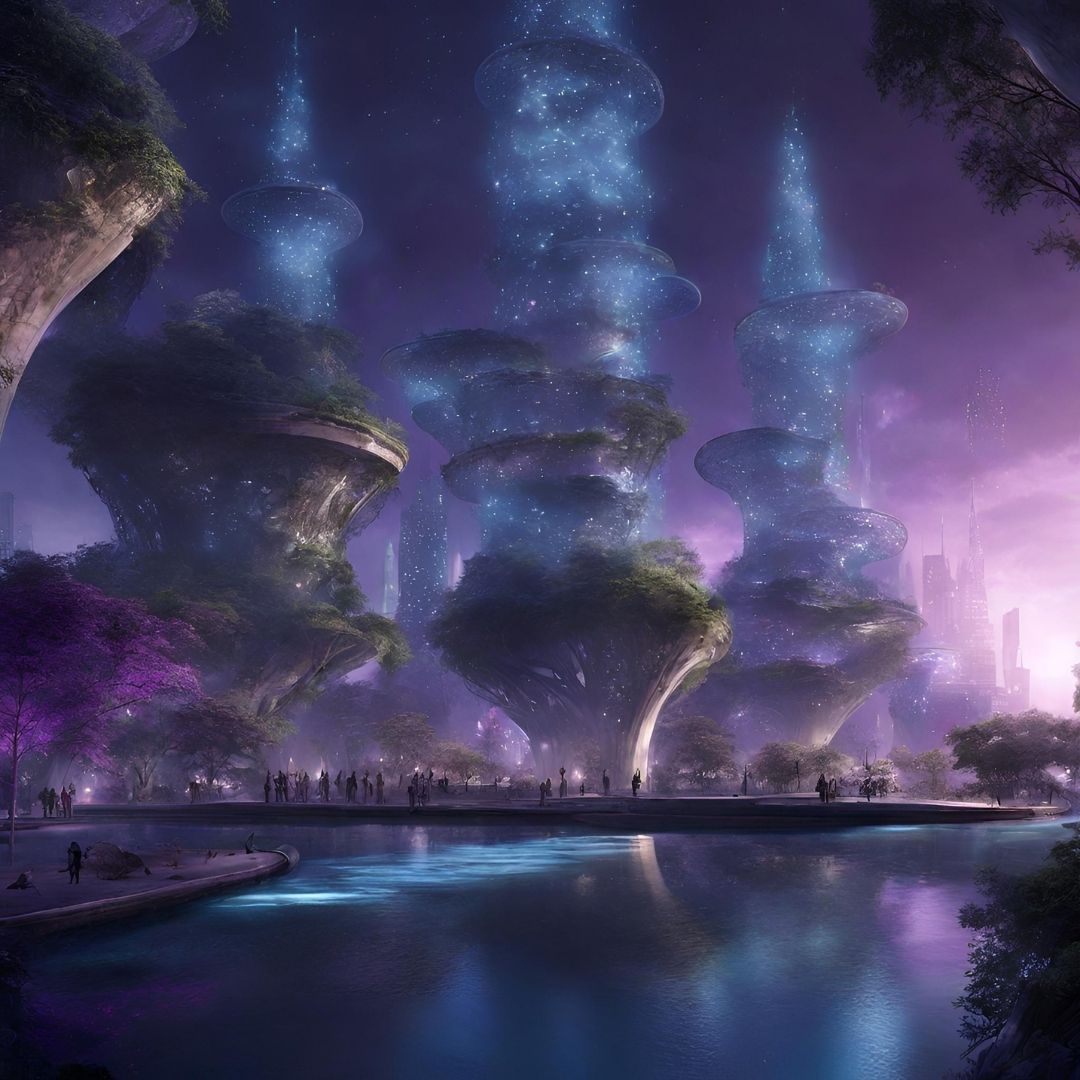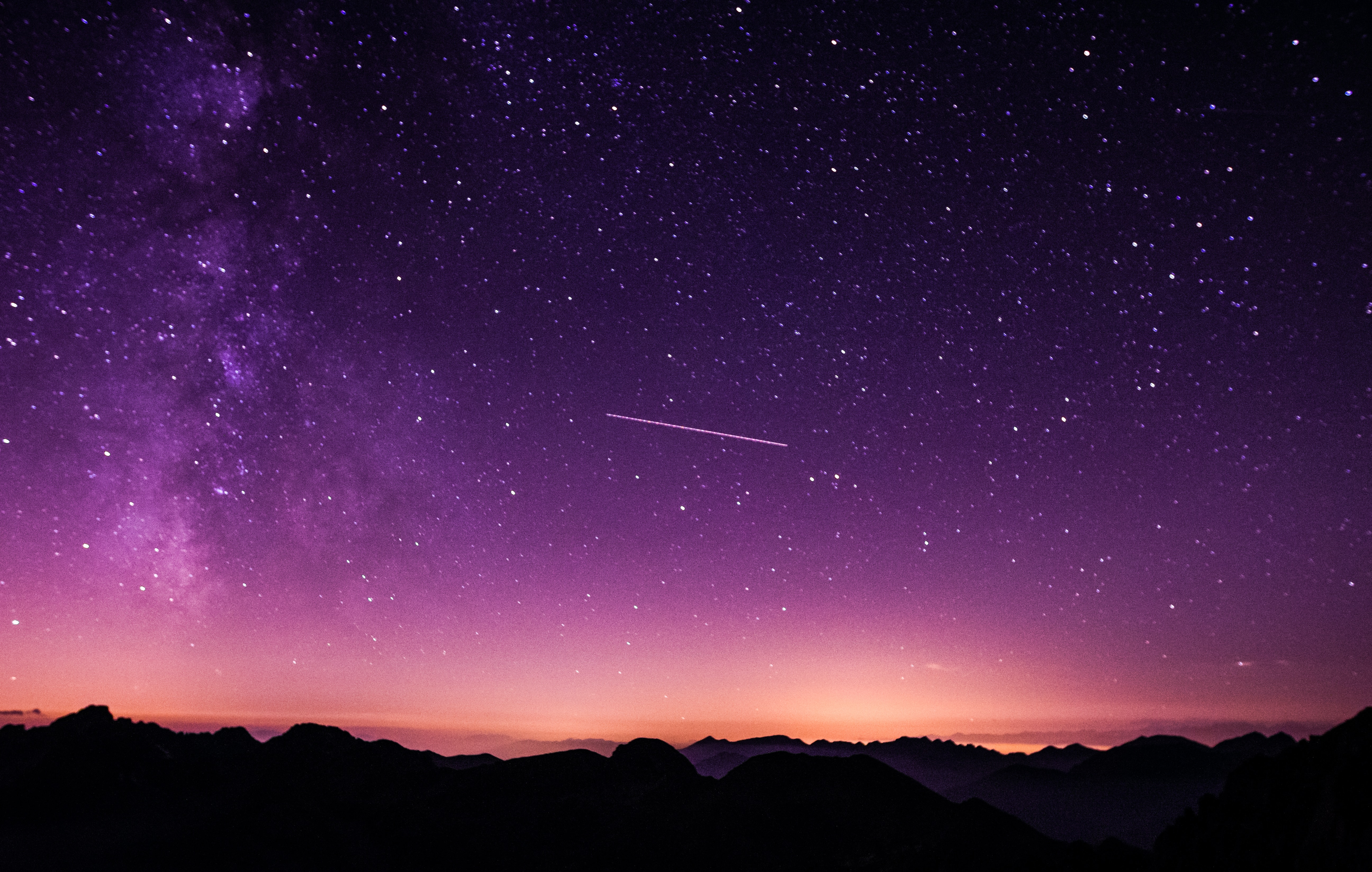
"Draco c" is an exoplanet in the constellation Lyra, 60 light years from Earth, with a unique atmosphere that creates a sky of lilac, blue and green tones. Its environment includes exotic landscapes with crystal beaches, bismuth-colored mountains, and bioluminescent forests. About 58% of its surface is covered in crystal clear water, and protective magnetic fields are generated by a bismuth core. The inhabitants live sustainably, valuing simplicity and connection with nature. "Draco c" is a visually stunning planet balanced between civilization and the natural environment.
So, what did you think of this place? Incredible, right?
This fascinating place was the result of an exploration of exoplanets that we carried out with NASA, and now we invite you to also be part of this excursion. Just explore our website and you will find a treasure trove of information about astronomy, space exploration and other wonders of the universe. Get ready to travel through knowledge and become even more enchanted by this new world. Do not miss this opportunity!

About
Welcome! This site was created during the NASA International Space Apps Challenge 2023 event, whose theme was “Exploring Open Science Together” in collaboration with NASA Transform to Open Science (TOPS). Here, we have included various information and curiosities that our study team found relevant for the exploration of the exoplanet Draco c (a fictional planet found outside our Solar System, in the orbit of other stars, and inspired by exoplanets that have the possibility of harboring life).
The Draco Team is a tenacious and courageous team, ready to face challenges with determination. Just as the Draco constellation represents a dragon in mythology, this team symbolizes the will to conquer obstacles and achieve goals, even in the face of difficulties. A united and resilient team, ready to overcome any adversity it encounters on its missions.
In this challenge, we are tasked with searching for habitable planets beyond our solar system. Come with us on this exciting intergalactic journey, and enjoy the beauty of this planet! Let's go?
Draco c
"Draco c" is an exoplanet in the constellation Lyra, 60 light years from Earth, with a unique atmosphere that creates a sky of lilac, blue and green tones. Its environment includes exotic landscapes with crystal beaches, bismuth-colored mountains, and bioluminescent forests. About 58% of its surface is covered in crystal clear water, and protective magnetic fields are generated by a bismuth core. The inhabitants live sustainably, valuing simplicity and connection with nature. "Draco c" is a visually stunning planet balanced between civilization and the natural environment.
Located about 60 light-years from Earth, in the constellation Lyra, "Draco c" is in the habitable zone and is the 2nd exoplanet to orbit the star Lyrith, a red dwarf smaller and cooler than our Earth's Sun. "Draco c" is named after the constellation Draco, which is prominent in the night sky. A year in "Draco c" lasts 200 days of 26 hours each.
The atmosphere of "Draco c" is predominantly composed of argon (72%), nitrogen (24%) and ozone (14%). The soft reddish light from the star Lyrith interacts with the atmosphere and bathes the planet in shades of lilac, blue and green, varying as the sun sets over the horizon and according to the season, creating impressive color patterns in the sky. . The seasons in "Draco c" are divided into winter (between 12° and 21°) and summer (between 18° and 27°) with light rain in both seasons.
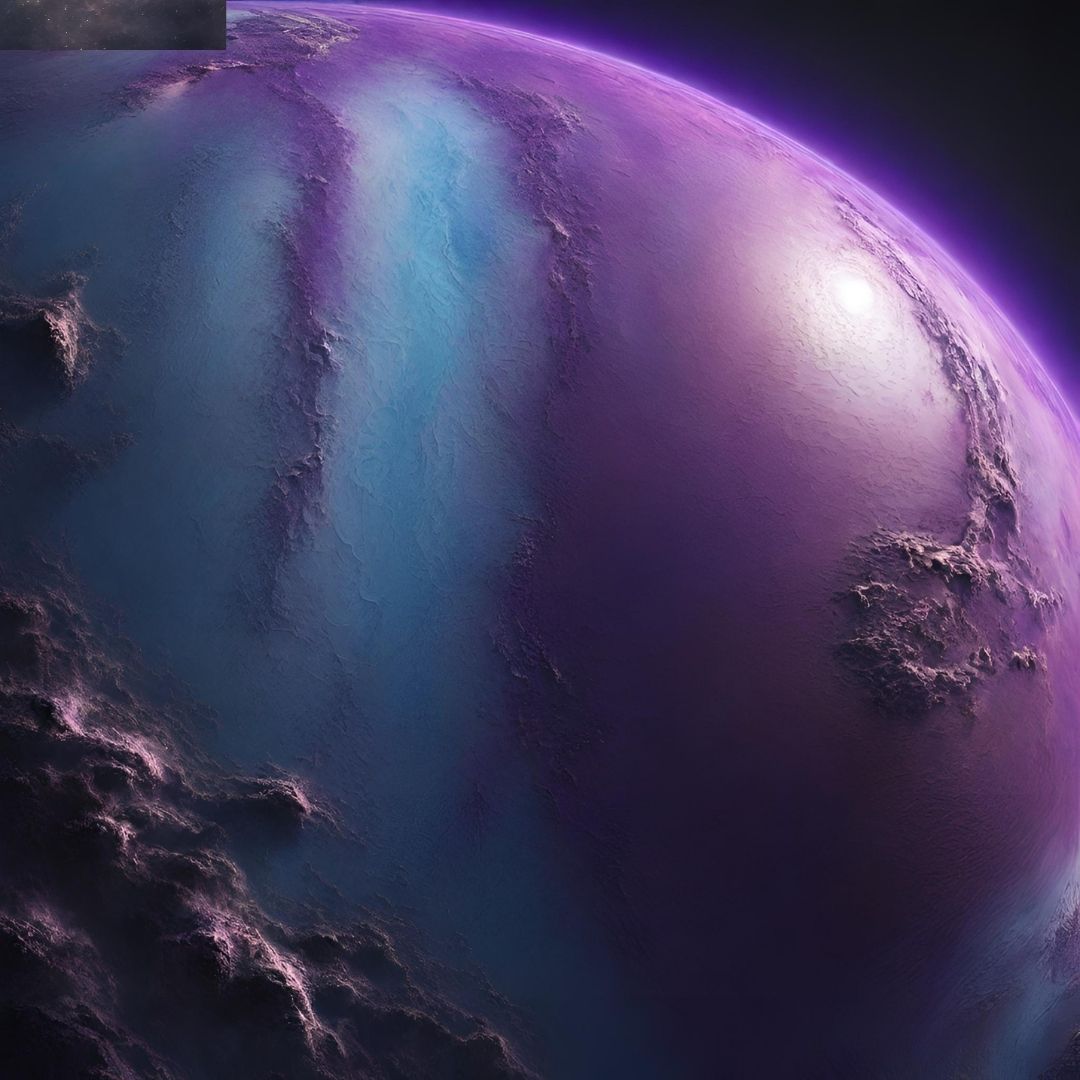
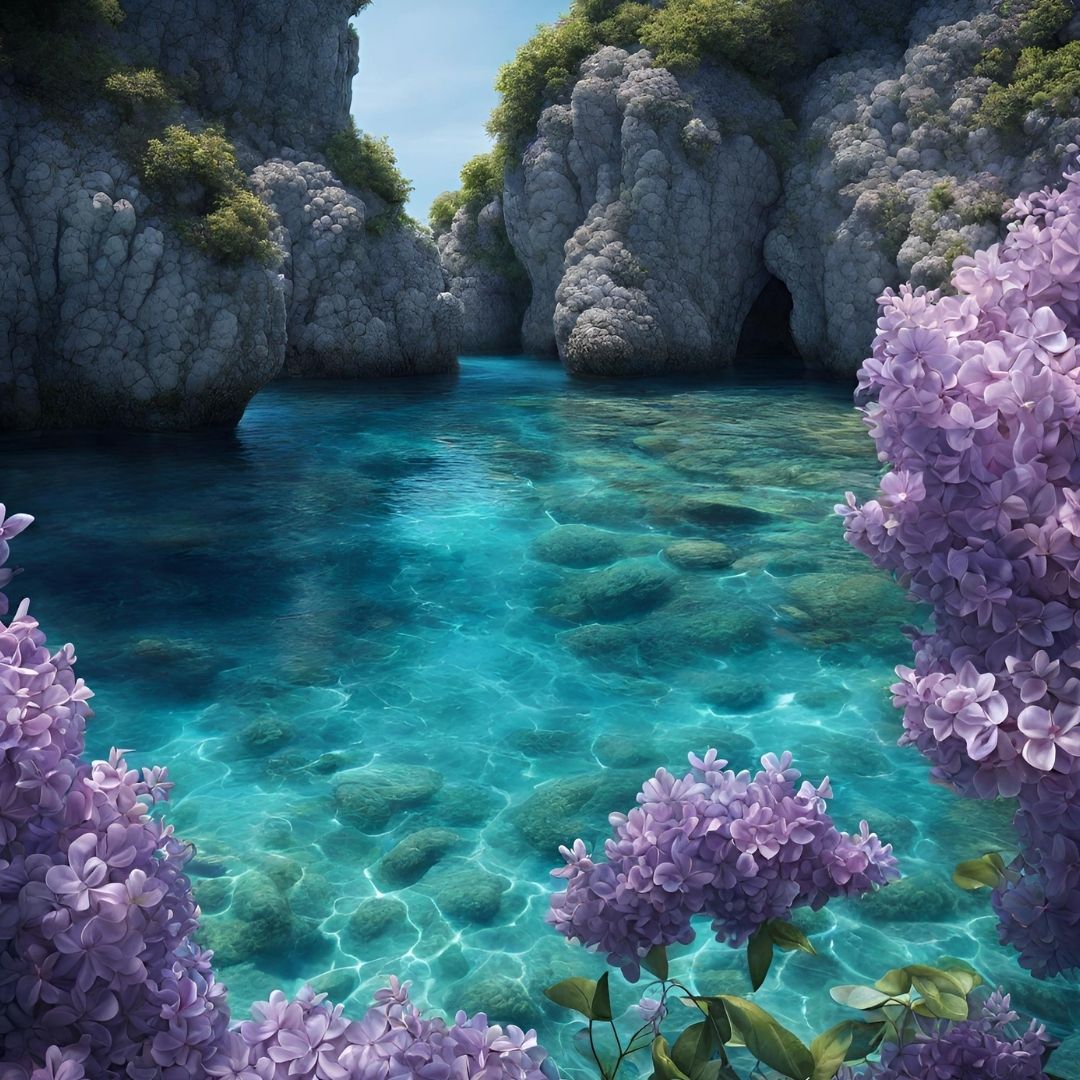
Around 58% of this planet's surface is covered by lakes, rivers and oceans of liquid and crystalline water, which, like the rest of the planet, is full of life, including exotic and colorful creatures. The polar ends account for 4% of the surface of "Draco c" and are covered by extensive ice sheets. Ice crystals in winter and polar areas shine in Lyrith's light, creating a stunning contrast with the liquid oceans and creating glittering sparkles that can be seen from space.
The geographical features of "Draco c" create a lush and surreal setting, in areas where water meets land, we see beaches with crystals and sand composed of various silicon minerals. Much of the surface of "Draco c" is abundant in bismuth, forming rugged mountains of dark metallic rock and rugged terrain. On the other hand, the presence of organic matter creates a variety of colors in the vegetation, dotting the landscape with native plants adapted to the peculiar atmospheric conditions of "Draco c", the bioluminescent and colorful foliage illuminating the landscape and paths at night.
Beneath the solid surface, a molten bismuth core creates powerful magnetic fields that protect the planet "Draco c" from solar storms and cosmic radiation. This feature is not visible to the naked eye, but its presence is fundamental to life and eventually generates spectacular auroras that can be seen at the ends of the poles.
"Draco c" is not a populated planet, to build the citadels the population uses sustainable materials seeking to maintain harmony with nature, respectfully enjoying the bioluminescent forests and crystal clear waters. Advanced technology would allow a more comfortable life, but the inhabitants of "Draco c" value simplicity and connection with the environment and develop according to what nature provides, having transport and some floating buildings thanks to diamagnetic properties of bismuth.
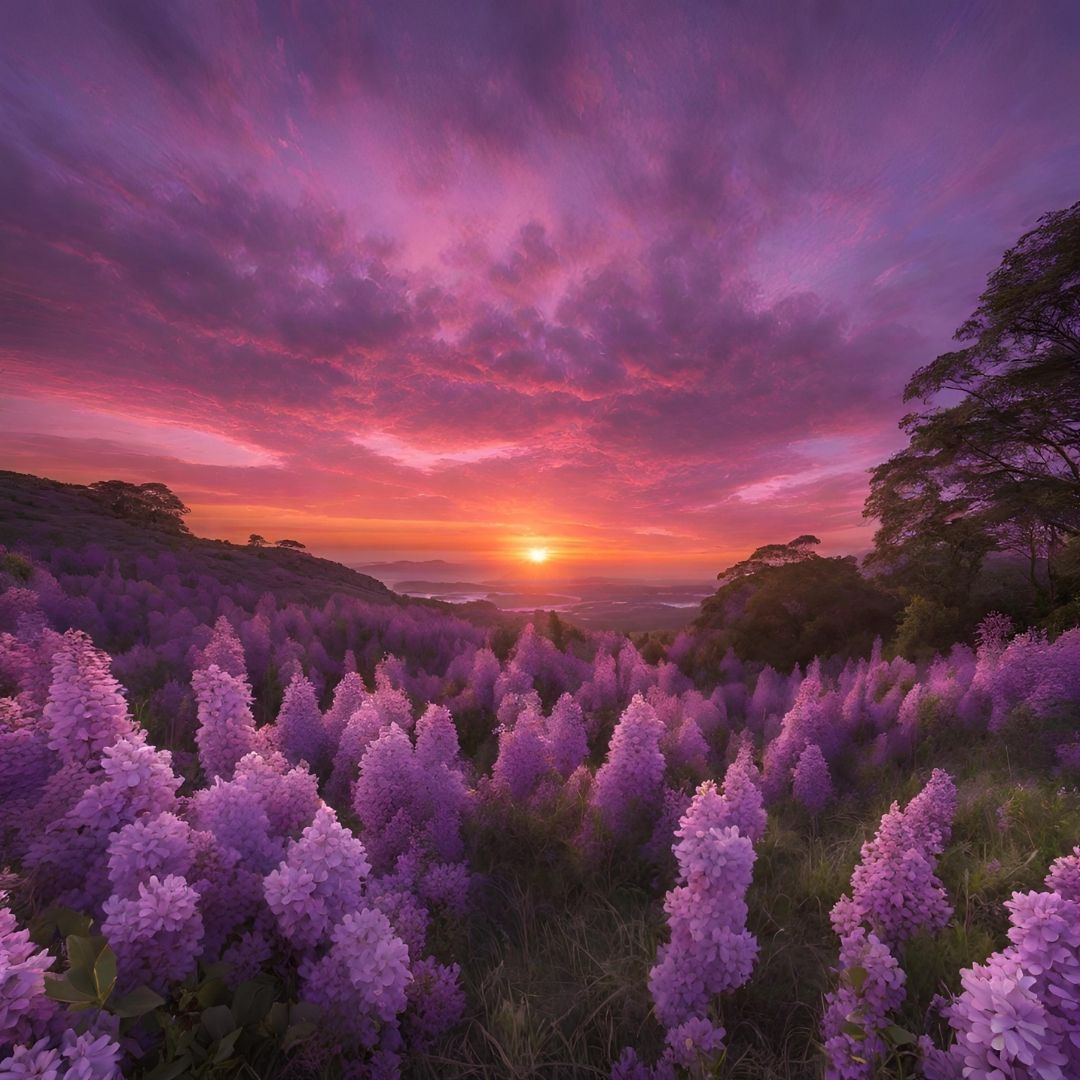
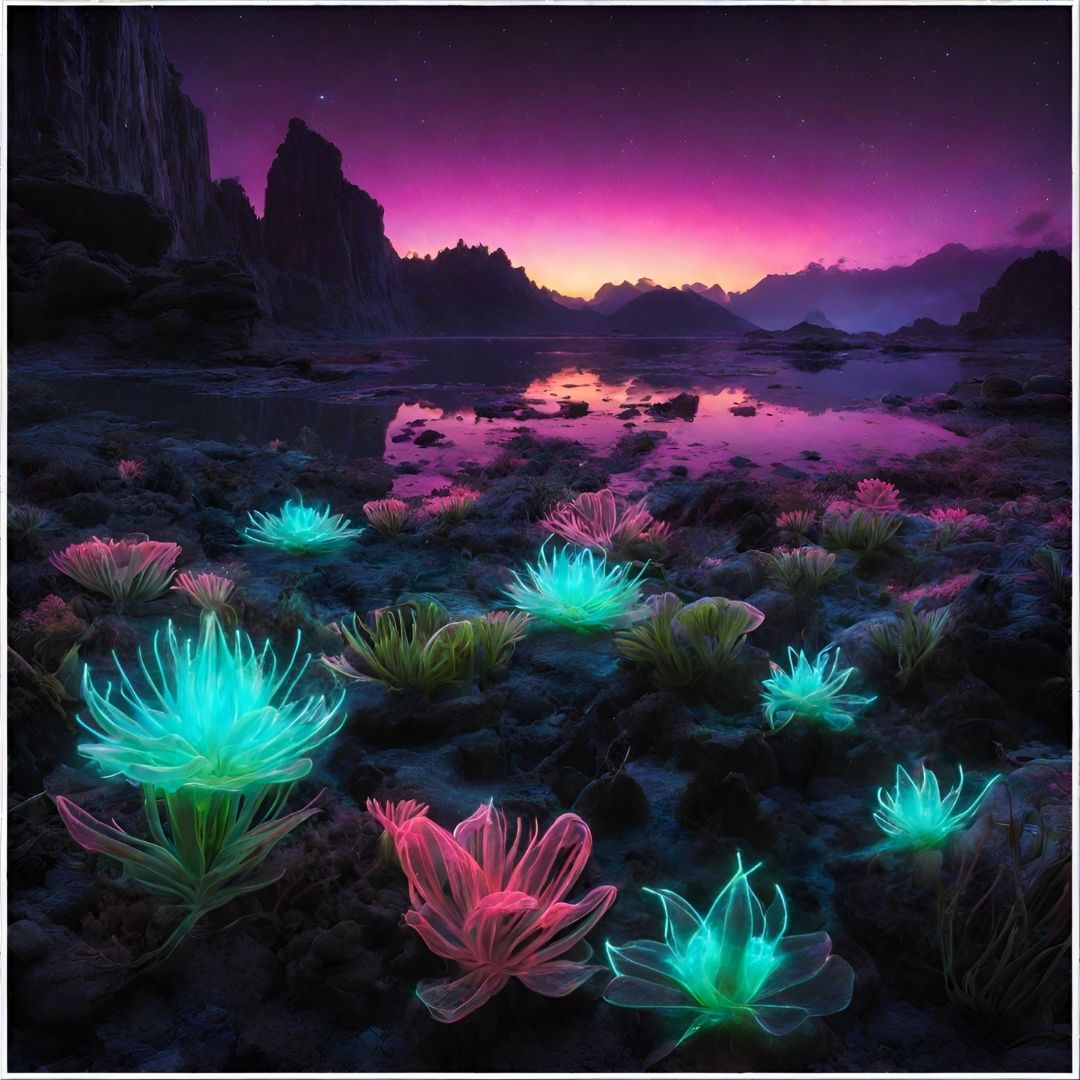
Overall, this planet is a unique visual spectacle, with lushly colored landscapes that combine nature and civilization, aquatic and terrestrial elements, all in a conscious and balanced way. Its distinct atmosphere and geological composition make it a truly special place in the cosmos.
Located in the constellation Lyra, "Draco c" orbits the red dwarf star Lyrith. Your atmosphere is mainly composed of argon (72%), nitrogen (24%) and ozone (14%), creating blue, lilac and green hues when the starlight interacts with it.
About 58% of "Draco c" is surface is covered in crystalline liquid water, harboring exotic life. At the polar ends, 4% of the surface is covered by extensive ice sheets that shine in sunlight, creating a dazzling contrast.
The planet's geography includes crystal beaches, mountains of metallic black rock and colorful, bioluminescent vegetation. Beneath the surface, in the planet's interior, a molten bismuth core generates protective magnetic fields and dazzling auroras at the poles.
"Draco c" is not densely populated. Its inhabitants value simplicity and connection with nature, building sustainable cities and living in harmony with bioluminescent forests and crystal clear waters. Even with advanced technology at their disposal, they choose a more conscious and still very comfortable lifestyle.
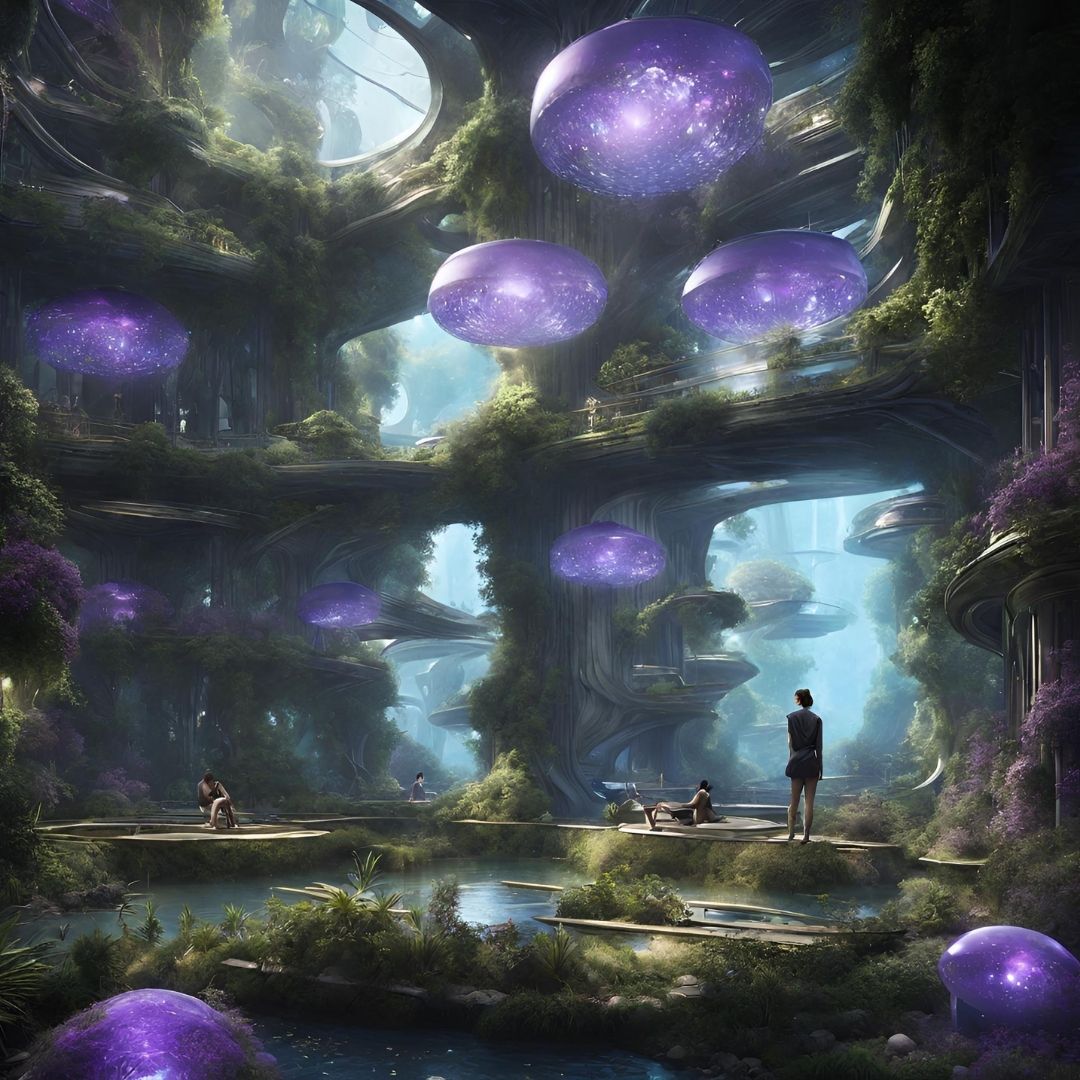
The inhabitants of Draco, like humans, have sexual reproduction that involves two individuals, one male and one female, contributing genetic material to create new life. Here is a summary of the process:
- Sexual Maturity: Draco individuals reach sexual maturity at a specific age when their bodies are ready for reproduction.
- Attraction and Courtship: When a male and female Draco feel attracted to each other, they may begin a courtship process. This involves social interactions such as communication, rituals, or displays of interest.
- Copulation: After successful courtship, the two individuals mate, similar to human copulation, where the transfer of male to female genetic material occurs.
- Internal Fertilization: Fertilization can be internal, with the male genetic material finding and fertilizing the egg in the female's body.
- Gestation: If fertilization is successful, the female Draco will develop the embryo in her body, in a gestation process that can last a specific period of time.
- Birth: After the gestation period, the female will give birth to one or more child. The exact way to give birth can vary depending on Draco's specific biology.
- Parental Care: Draco's parents may be responsible for caring for the puppies, protecting, feeding and teaching them until they reach independence.


The diet of the people of Draco is based on a variety of foods, including vibrantly colored vegetables, exotic fruits, fish and seafood from the deep ocean. They also value unique herbs and spices to add flavor to their meals. Their diet is rich in nutrients and reflects the abundant biodiversity of their lilac and blue planet.


| Draco c | Earth |
|---|---|
| 2nd planet to orbit the Lyrith Star | 3rd planet to orbit the Sun Star |
| 1 year is 200 26-hour days | 1 year is 365 24-hour days |
| Atmosphere: 72% Argon, 24% Nitrogen and 14% Ozone | Atmosphere: 78% Nitrogen, 21% Ozone and 1% Argon |
| 62% of the planet is water | 71% of the planet is water |
| Seasons: summer and winter | Seasons: spring, summer, autumn and winter |
| Predominantly lilac and blue color | Coloração predominantemente verde e azul |
| Core of the planet: Bismuth | Core of the planet: Iron and Nickel |
| Average temperature of 12°c | Average temperature of 17°c |
Gallery
Have you ever thought about discovering a world even more fascinating than our solar system? No? So, in this gallery you have access to images and videos of an exoplanet called Draco C, where you can carry out space exploration and get a glimpse of this impressive distant world. Come and discover the mysteries of outer space and the fascinating creatures and elements that you can find in this beautiful place! Fasten your seatbelts and let this journey begin! 🚀
